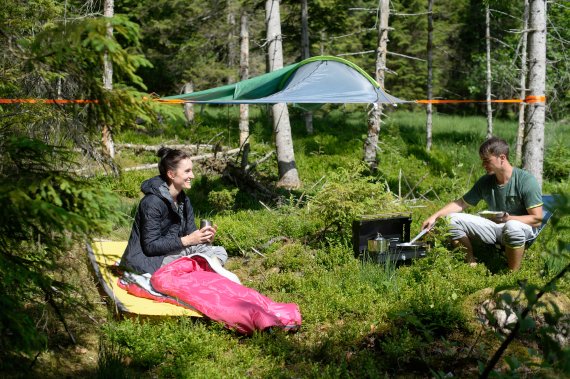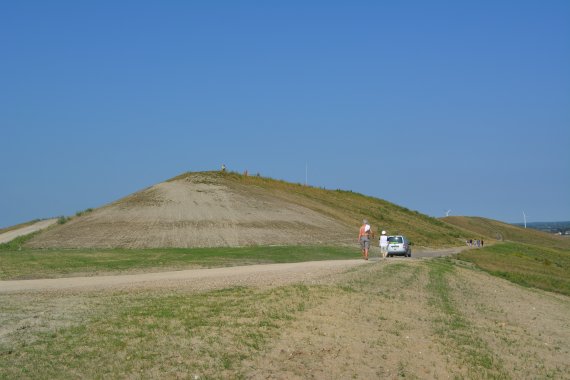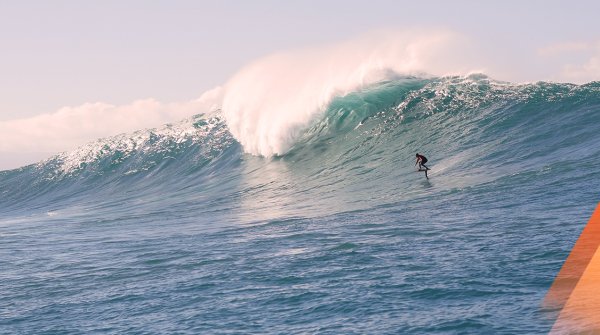
Opening the tent in the morning, quickly photographing your own legs in front of the panorama and enjoying the sunrise with a fresh espresso in your hand - that's how camping looks often enough, at least in advertising. Those who actually experience this have either had good luck with their campsite or spent the night on their own in the middle of nature. That is possible in principle. But especially with wild camping there are many ifs and buts - and the regulations for spending the night outdoors vary from state to state.
Wild camping is prohibited here:
- Lower Saxony
- Saxony
- Saxony-Anhalt
- Thuringia
- Saarland
Here wild camping is not explicitly allowed:
- Bavaria
- Rhineland-Palatinate
- North Rhine-Westphalia
- Hamburg
- Hesse
- Berlin
Bremen prohibits camping in fields, and in Brandenburg hikers on foot, horseback, bicycle or water have the right to camp if they are not in nature reserves.
And beware: camping overnight in national parks, biotopes or nature reserves is taboo anyway. You may camp overnight on private land if the owner gives the green light.
One thing is certain: the urge to get out into nature is unbroken. And not everyone wants to worry about legal issues before the tour. More and more so-called nature campsites are specialising in this: Not quite wilderness, but always close to nature, simpler, more rustic. You won't find well-kept front gardens in front of mobile homes here, but campfires, community, fun in the forest, on the beach or by the river - a good start to a great adventure, especially for families. Four suggestions.
Here you are not "on the campsite", but in the garden of Sonya and Hans. Or just in the middle of the wilderness. The nature campsite is located in the Siebenbachtal in the Volcanic Eifel, directly on the banks of the Üssbach and has space for a maximum of 100 people. The valley is a great adventure playground, not only for children. You can cook in the covered barbecue hut or in front of the tent.
Camping on a farm in the Swabian Alb biosphere area, surrounded by juniper heaths, fairytale beeches, karst stone caves and deep gorge forests, as well as lonely cycling and hiking trails. If you don't like tents, you can book a circus wagon, a tipi or a yurt. It is always beautiful.
Since the 1950s, outdoor enthusiasts have been meeting here on the banks of the Elbe to camp. Small, green, relaxed. The purist site is located in the middle of the forest between Königstein and Rathen and can only be reached via a small road - or from the river: Canoeists can get in and out directly at the campsite. The Saxon Switzerland National Park is only a stone's throw away.
https://aktivhostel-elbsandstein.de
In Lohme on the island of Rügen you will find this camping jewel in the Jasmund National Park with the UNESCO World Natural Heritage Site "Ancient Beech Forests of Germany". From the forest campsite it is only about three kilometres to the Königsstuhl, the signature rock of Rügen. There is more than enough for the eye: The views from the chalk cliffs and to Cape Arkona, the sunsets - incomparable.
Finally going to the mountains? Everything is totally overcrowded. Why not go exploring on your own doorstep and discover the real highlights of your city?
- 121.9 m above sea level
- Mountain: Deponieberg
- Coordinates: 52° 38′17″N, 13° 24′17″O
Something is happening in Berlin - even with the elevations of the city. For many years, Teufelsberg with its abandoned listening station was considered the highest peak. Until in the north of Pankow the Arkenberge became higher and higher. Since 2015, the building rubble fill with 122 meters is considered the highest point in the capital. Those who make it to the top have a view of the city: TV tower, Reuter power station, Teufelsberg - all clearly visible on a clear day.

- 254,3 m above sea level
- Mountains: Ardeygebirge
- Coordinates: 51° 25′20″N, 7° 28′15″O
To the west of Hohensyburg lies Klusenberg, the highest point in Dortmund. Large parts are a nature reserve. On the hilltop, however, there is still an active quarry. To the south lies the Hengsteysee, where the Ruhr and Lenne rivers meet.
- 383 m above sea level
- Mountains: Westlausitzer hills and mountains
- Coordinates:51° 1′35″N, 13° 55′23″O
Due to the incorporation of the village of Schönfeld-Weißig, Dresden also grew upwards: since then, the Triebenberg, with an altitude of 383 metres, has been the highest peak in the city. The Triebenberg is located near the village of Reitzendorf, about 18 kilometers from the Semper Opera House. Until the withdrawal of the Soviet Army, the forested summit plateau was home to a well-camouflaged military post; today it is a branch of the TU Dresden.
- 185 m above sea level
- Mountains: Berger Ridge
- Coordinates: 50° 9′2″N, 8° 43′45″O
The Lohberg is not only the largest elevation of the banking metropolis, it is also the last vineyard within the city. Frankfurt's local mountain with its parks (and a toboggan run in winter) is located in the Seckbach district. The view goes over the Henninger Tower and the city centre skyline, the Messeturm and the Europaturm.
- 116.2 m above sea level
- Mountains: Harburger Berge
- Coordinates: 53° 25′49″N, 9° 51′50″O
If you want to escape the hustle and bustle of Hamburg, hike to the Harburg Mountains. Here the hiker will not only find large areas of heath and natural forests, but with the Hasselbrack also the highest point of the Hanseatic city - a proud 116.2 meters above sea level. In addition to a wooden cross, there is a white granite marker at the top.
- 118.04 m above sea level
- Mountains: none
- Coordinates: 50° 56′19″N, 7° 8′31″O
The highest elevation in the city of Cologne is in the Königsforst. And seems like a carnival joke to the unprejudiced visitor. Not just because of its name (after its three discoverers). In the local hiking and Cologne literature there are numerous route suggestions around and over the hill. Monte Troodelöh is part of the Eifelverein's Kölnpfad (Cologne Trail) and is considered a tourist attraction, although there is neither anything to see nor an inn.
- 565.1 m above sea level
- Mountains: rubble heap
- Coordinates: 48° 10′ 0.91″ N, 11° 33′ 6.53″ O
579 meters high is the highest point in Munich: the remains of a medieval tower hill at the Warnberg monastery. To pass for a summit, however, the spot is simply too flat. Much more striking: The large Schuttberg aka Olympiaberg, which rises about 60 meters above the Olympiaberg and comes to a height of 565.1 m above sea level. On a clear day, you can enjoy spectacular views far into the Alps from here; the Olympiaalm on the mountain is Munich's highest beer garden.

- 509.4 m above sea level
- Mountains: none
- Coordinates:48° 45′ 55″ N, 9° 7′ 54″ E.
The hike to the nearly 510-meter-high Birkenkopf is a journey into the past: the mountain rises about 300 meters above the Neckar River and even grew by about 40 meters between 1953 and 1957, when rubble from the Second World War was deposited here. Remains of facades of destroyed buildings can still be seen on the summit. Hence the nickname: Monte Scherbelino.

 OutDoor by ISPOOutDoor in transition
OutDoor by ISPOOutDoor in transition
- Awards
- Mountain sports
- Bike
- Fitness
- Health
- ISPO Munich
- Running
- Brands
- Sustainability
- Olympia
- OutDoor
- Promotion
- Sports Business
- Textrends
- Triathlon
- Water sports
- Winter sports
- eSports
- SportsTech
- OutDoor by ISPO
- Heroes
- Transformation
- Sport Fashion
- Urban Culture
- Challenges of a CEO
- Trade fairs
- Sports
- Find the Balance
- Product reviews
- Newsletter Exclusive Area
- Magazine





